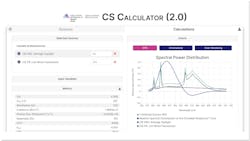The relatively new Mount Sinai Light and Health Research Center (LHRC) has added to its first major announcements with the launch of an improved circadian stimulus (CS) calculator that ultimately enables stakeholders to accurately predict the circadian impact of solid-state lighting (SSL) installations in an architectural space. The CS Calculator 2.0 adds enhancements that improve the accuracy of circadian impact projections based on stimulus from narrowband sources such as LEDs.
The staff at the LHRC just settled into their new laboratories and engineering space over the course of the summer. Much of the staff has moved over from the Lighting Research Center (LRC) at Rensselaer Polytechnic Institute, although some LRC staff remains and that lab continues to operate. Just recently, we reported on work that the LRC did on LED lifetime testing methodology for the International Energy Agency (IEA) Energy Efficient End-use Equipment (4E) Solid-state Lighting (SSL) Annex.
The original work on the CS Calculator was done at the LRC but was more the focus of the group that moved to the LHRC to pursue laboratory lighting for health and wellbeing research. The calculator debuted back in 2018 and has always been available as a free download. The calculator enables developers, specifiers, researchers, or other stakeholders to simply project the circadian impact of a source, albeit based on the specific CS metric.
Circadian metrics remain a controversial topic and we would say a work in progress, although there is demonstrated validity to CS and other metrics. While at the LRC, Allison Thayer of the LHRC authored a four-part article series on circadian health with CS as the basis. See that series for background.
The new calculator adds the impact of exposure duration to a stimulus in 15-minute increments. The accuracy relative to narrowband sources is improved. And realize that many believe that the circadian system has a relatively narrow sensitivity peak.
In the updated version, users can get CIE α-opic irradiances in the output metrics. There is more flexibility in terms of data formats supported. The user interface is improved. And compatibility with the prior calculator is maintained.
The LHRC believes CS accurately represents the impact of electromagnetic radiation on the retina in terms of how the radiation impacts the master human body clock. The metric represents the spectral sensitivity of the circadian phototransduction circuits in the retina and can map that impact from threshold to saturation.
Mark Rea is co-director of the LHRC, longtime LRC leader, and one of the leading lighting for health minds in our industry. He said, “The CS Calculator 2.0 takes us another step closer to routinely engineering bright days and dim nights that lead to better sleep at night and less sleepiness during the day.”
Interested parties can download the new calculator on the LHRC website. Moreover, the LHRC has published a robust set of documentation of the calculator functionality.
LEDs Magazine chief editor MAURY WRIGHT is an electronics engineer turned technology journalist, who has focused specifically on the LED & Lighting industry for the past decade.
For up-to-the-minute LED and SSL updates, why not follow us on Twitter? You’ll find curated content and commentary, as well as information on industry events, webcasts, and surveys on our LinkedIn Company Page and our Facebook page.





